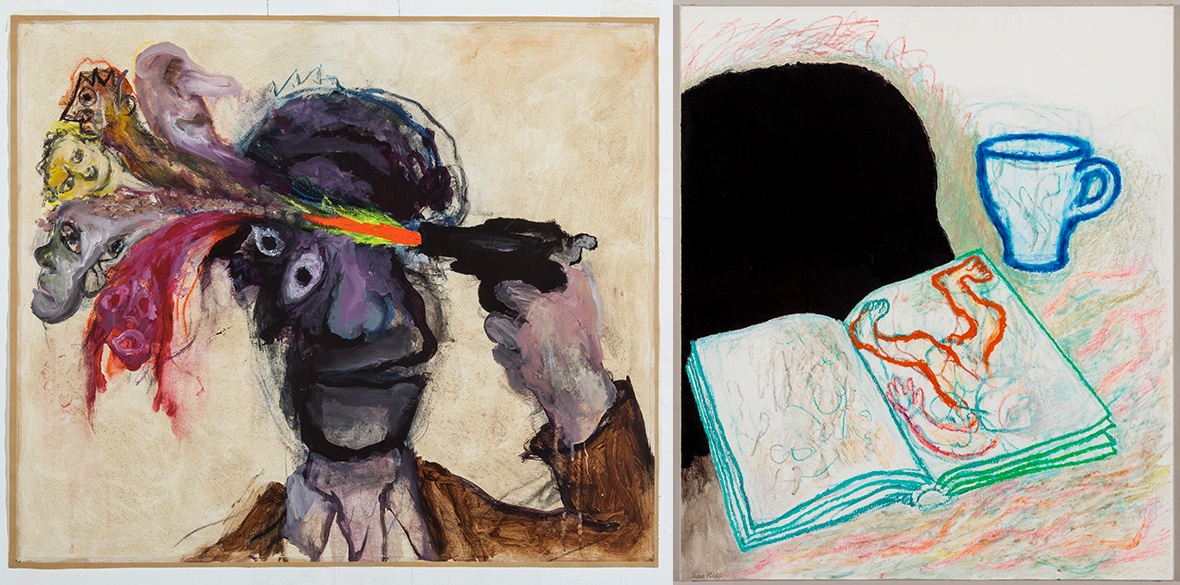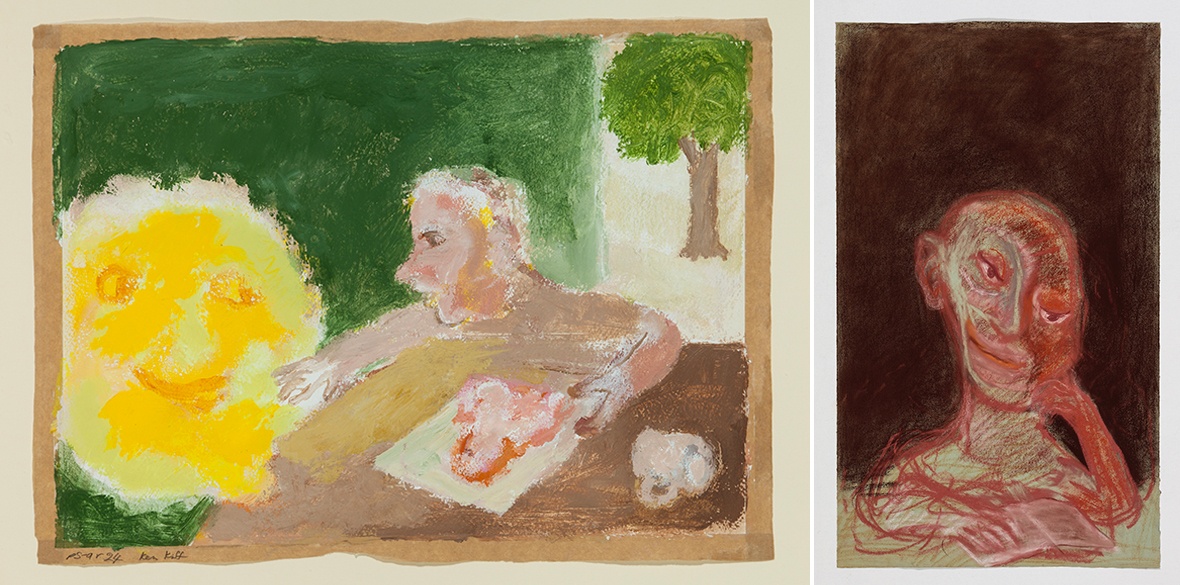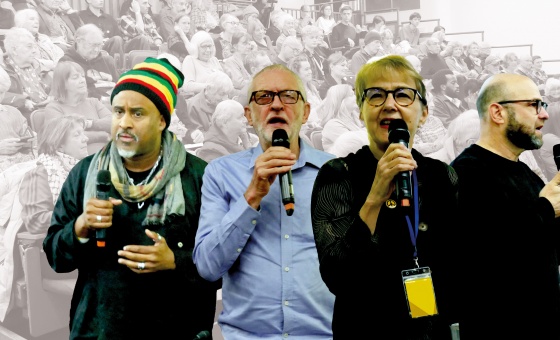This is the last article you can read this month
You can read more article this month
You can read more articles this month
Sorry your limit is up for this month
Reset on:
Please help support the Morning Star by subscribing here
Ken Kiff – A Hundred Suns
Three Highgate, London
WALK up the hill from Archway Tube, north London — or down from Highgate — and find the gallery Three Highgate, and the current incredible show of the late British painter Ken Kiff (1935-2001).
Born in Dagenham, east London, Kiff later studied at Hornsey School of Art, just a mile down the road. He was always his own man — linking the inner world with the outer. Don’t all artists do that? Not like this. Note “the” and not “his,” as there is something universal about his work. His “constellation of mental activity” speaks to all.
A child during WWII, he later eschewed his contemporaries’ obsessions with abstract painting. Let’s pause on the word obsessions; his own were the stuff of paint, and how it could render the poetic on the flat surface.
His relationship with the poetry of Vladimir Mayakovsky is fascinating too, as both poet and painter adored the sun. Don’t we all, you might say. It’s primal, isn’t it? Yes, but Kiff and Mayakovsky embodied the sun itself in their work rather than abstract light. These two are soul mates — sun kings.
Irina Johnstone’s fine translation of Maykovsky’s 1920 poem An Extraordinary Adventure Which Befell Vladimir Mayakovsky In A Summer Cottage is reproduced in the slim hardback book accompanying the exhibition. The poem is answered by the painter Kiff as he paints many suns, and in 1977 a portrait of Mayakovsky blowing his brains out. This tragi-comic painting shows brains as people and the trail of the bullet as a slick of light.
This painting pretty well greets us as we enter the gallery. Mayakovsky in fact shot himself in the heart in 1930, but Kiff’s retranslation of the suicide is like a love letter to the poet.
The book covers two other poets important to Kiff — Martha Kapos and Frank O’Hara — as they wrestle with what it is to be alive in the world.
“Fantasy,” said Kiff, “is way of thinking about reality.” His childlike figurative distortions are like Picasso’s in the sense that the freshness of the art emulates that of the very young, which is only made until inhibition kicks in at the end of childhood.
Kiff, like Picasso could do anything he wanted. His painting also has the qualities of the early 20th century expressionists’ school. A bit Fauve, a tad Blue Reiter. But Kiff didn’t particularly belong to any school other than groups of Jungian thinkers and their thinking about archetypes in art.
It’s always interesting as a reviewer to take along another artist. I took Jowonder, whose own work relates to Kiff’s in its figuration and imaginative qualities. I asked her what she thought of the show.
“I feel like I’m seeing some real art; some rays have gone in.”
Jowonder, like Kiff, can be as intellectual as you like, but she added: “Unlike today’s art school obsession with the intellect — all this critical analysis stuff — Kiff knew you had to drop that to follow his painterly desires.”
Apparently Kiff had a virile intellect, and as fierce as the sun. Curator Alistair Hicks and author of the essay “Exult” in the show’s accompanying book writes: “Kiff was an intellectual, with endless nagging doubts. He was always questioning, and his reasoning was byzantine, circuitous, forever probing, but when it came down to his paintings, he managed to conjure up those hundred (suns) in one.”
As Gaston Bachelard said: “The poet does not describe, he exults.”
Hicks again: “Following Kiff’s meandering but always needle-sharp thinking can distract from the essential simplicity of individual works.” I can see, then, that in the way his friend Paul Klee took his pencil for a walk — Kiff took his intellect.
And the imagination? For sure — but I feel his paintings to be more translation, like AC to DC. The paintings are open enough for you to mainline and let your soul/spirit/senses/intellect — and daft ideas like AC-DC — decide. The spiritual, by the way, is that which is not matter, yet they are not particularly spiritual works in the way that Marc Chagall’s and a lot of German Expressionism is. That’s growing up in Dagenham for you!
His art was visionary, some times like William Blake’s. His colour, forms and content have great integrity and are exciting to look at whatever your politics, or what you think art should be in a certain era. For if you look at his work this way you miss the point — and the sun.
Founded in 2021 by Irina Johnstone, Three Highgate’s cultural programme extends artists’ work and legacy through book publishing, cinematography, writing, artists’ talks and residencies as well as art exhibitions. A Hundred Suns was curated by Alistair Hicks with the support of Irina Johnstone, Anna Kiff and the Ken Kiff estate.
Runs until January 5 2025. For more information see: threehighgate.com.











